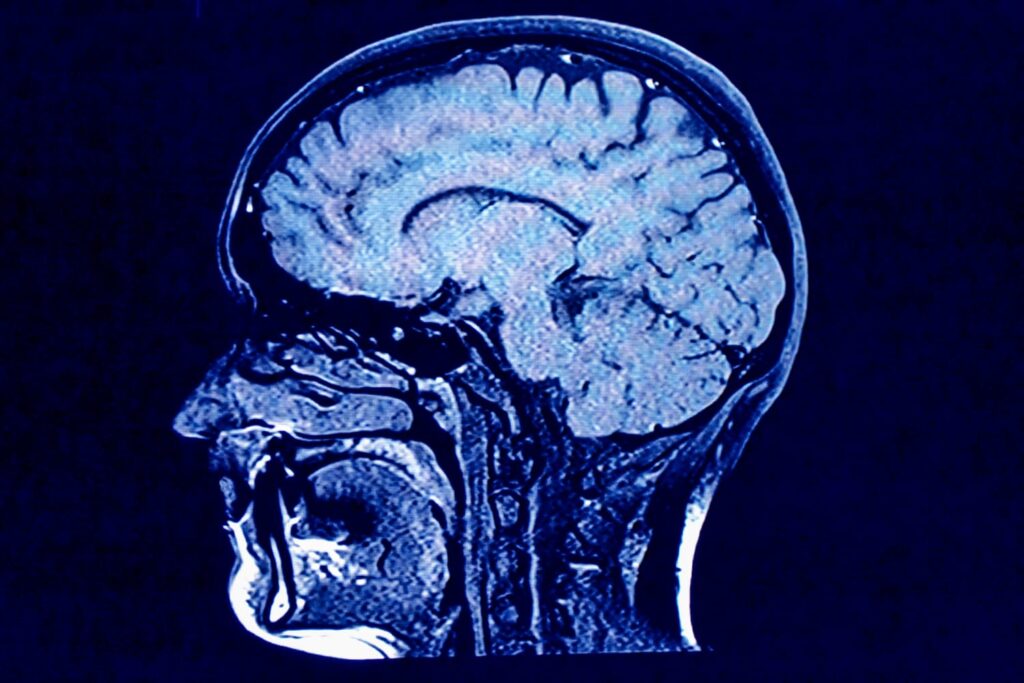The first two patients to undergo an experimental brain surgery for binge eating disorder say that one year later, they feel more in control of what they eat and have fewer cravings.
“I am fully aware of my cravings,” Robyn Baldwin, 58, of Citrus Heights, California, told NBC News. “Sometimes, I can just stop, take a breath, and say, ‘Nope.'”
Baldwin, along with Lena Tolly, 48, of Elk Grove, California, underwent the surgery after failing to respond to other treatments for binge eating disorder.
Preliminary findings on the effects of the surgery — part of a pilot study that will include a total of six people — were reported Monday in the journal Nature Medicine.
It’s the first time deep brain stimulation has been used to treat binge eating disorder. In the study, surgeons implanted a device that learned to detect when the patients had a craving to binge eat, and then deliver a small zap to the brain to lessen the craving.
“The fact that this can be done is pretty amazing,” said Dr. Kai Miller, an associate professor of neurosurgery at the Mayo Clinic in Rochester, Minnesota.
“It is brain surgery, and that comes with its own set of risks,” said Miller, who wasn’t involved with the new research. “But these patients improved over time and had fewer binge eating episodes.”
Robyn Baldwin said her cravings for food were more in control after deep brain stimulation.Courtesy Robyn Baldwin
For Baldwin, the change was almost immediate. “Within a few days, I could tell that the cravings were becoming under control,” she said. “I wasn’t constantly thinking about food.”
It took longer for Tolly to feel an effect, but after several months she echoed the feeling of control. “I am never gonna give up carbs,” she said, “but I have a better relationship with them, and am making better choices.”
Binge eating disorder is the most common eating disorder in the United States, surpassing anorexia and bulimia. People with binge eating disorder lose control over how much they eat, even after they feel full.
That loss of control, said senior study author Dr. Casey Halpern, is the result of misfired signals in the brain.
“It’s not that they can’t control themselves,” said Halpern, a neurosurgeon and chief of stereotactic and functional neurosurgery at Penn Medicine in Philadelphia. “It’s a signal in the brain that’s gone awry.”
How does it work?
During the surgery, a pacemaker-like device is implanted under the scalp. This device is then wired to the nucleus accumbens, an area of the brain that plays a vital role in how people experience reward and satisfaction.
Halpern and his colleagues aimed those wires specifically at two smaller parts of that brain region: one that regulates how people manage their impulses, and one that controls appetite.
The device has two jobs. It records brain activity and can also deliver small electrical zaps to the brain, meant to help stifle cravings. There’s no physical sensation when these zaps occur, but the patients might notice changes in mood.
Initially, the device must be trained to detect what types of brain activity are linked to cravings to binge eat. To do so, Baldwin and Tolly wave a magnetically charged wand over their head when they feel the urge to binge, signaling to the device that the brain activity it sees is connected to cravings. Eventually, it is able to decode such brain activity on its own, and deliver a zap to the brain when it appears that the person is likely to binge.
Recommended
Six months after the device was turned on, both women felt more in control of their binge eating urges, Halpern said. One, he added, no longer met the criteria for binge eating disorder.
“Both patients are definitely reporting and feeling like they have more self-control than they did before,” he said.
Longer-term data on Baldwin and Tolly are expected to be analyzed and published at a later date. Two more patients are expected to undergo the surgery within the next six months. The study will ultimately include six patients.
A limitation to the current findings is that the two women are demographically similar: middle-aged and overweight.
While it appears to be an innovative approach to treating binge eating disorder, it’s unclear whether the technique would be useful in a majority of patients, said Stephen Wonderlich, co-chair of the Research Advisory Council of the National Eating Disorders Association.
“How broadly does this apply?” Wonderlich said. “Would the findings generalize to people with different body sizes? We don’t know.”
The research is not the first to use deep-brain stimulation to address cravings.
Dr. Ali Rezai, a neurosurgeon and executive chair of the Rockefeller Neuroscience Institute at West Virginia University, is studying the technique as a way to treat opioid use disorder.
The binge eating findings, he said, are consistent with other studies that show changes in brain activity in people with other neuropsychiatric conditions.
Rezai added that it will be important to confirm the findings in other patients with binge eating disorder and follow through with longer-term data.
Follow NBC HEALTH on Twitter & Facebook.

